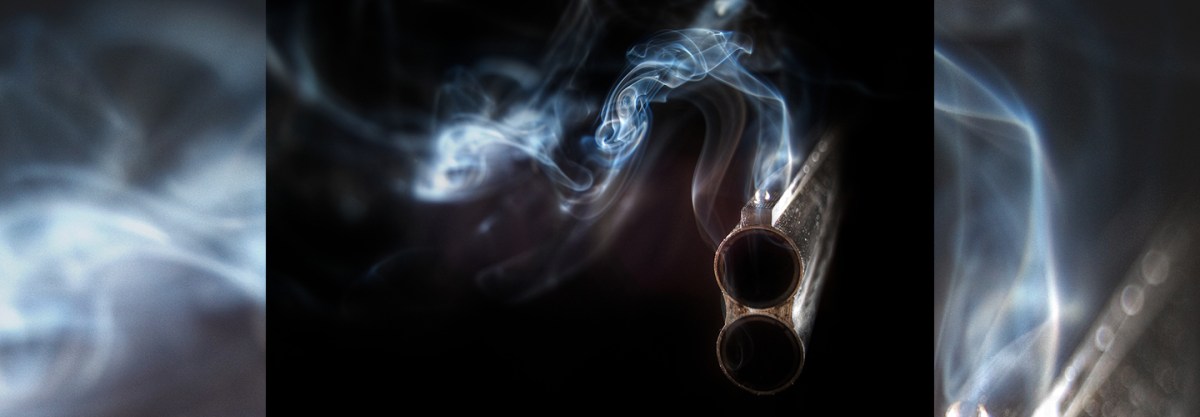With a bag of groceries in one hand, Stefan Bandera was struggling with the lock to the door of his Munich apartment building. The lock had given people trouble for weeks, but it usually worked eventually.
As he fiddled with his keys, he noticed a man inside the building that looked somewhat familiar. He’d seen him before, in the building, but he wasn’t a resident.
As Bandera pulled his keys from the lock, the man approached and offered a friendly, “Doesn’t it work?”
When Bandera answered, “Yes, it works,” the man made a quick, curious movement, lifting a folded newspaper towards Bandera’s face.
Suddenly a burst of a gas of some kind exploded in Bandera’s face. He stumbled to the side and, as the other man walked past him out the door, Bandera collapsed to the ground.
The man, Bogdan Stashinskiy, walked out of the building and took a roundabout route towards a canal. There he pulled out his weapon, a poison gas gun, and tossed it into the water. Hours later he was on a train headed east, eventually finding himself back in East Berlin, playground of the KGB.
An autopsy later showed trace amounts of a potential poison, but for a long time local police thought Bandera died of natural causes.
That’s the story of Stashinkiy’s second assassination at the behest of Soviet intelligence– at least according to Stashinkiy himself. The alleged murder took place in 1959, and two years later Stashinkiy defected to the West. The story above is the one he told the CIA during long debriefings, according to declassified CIA files.
Stashinkiy’s first kill supposedly came in 1957 – another Ukrainian who died of what authorities thought was another heart attack also in Munich.
Both men were popular Soviet émigré figures, potential threats to the Soviet system.
“Such [assassination operations] are sometimes designed to demonstrate that the Soviet regime can strike its enemies anywhere in the world,” another CIA report from 1975 says. “The Soviets hope thereby to create fear, unrest, confusion, and dissension within émigré organizations, and at the same time deter other emigres from joining their ranks.”
The CIA didn’t take Stashinkiy at his word and conducted a detailed analysis into his claims of the assassinations – eventually deciding the evidence more supported his claims than not.
Among them something a professional killer probably wouldn’t cop to: how bumbling his first attempt to kill Bandera was.
During a trip to the apartment building before the assassination, Stashinskiy tried to pick the lock on the apartment building door with a number of different tools.
“None of the different bits fitted the lock and, when Stashinskiy tried to use force, one of the bits broke off and dropped into the lock housing in the door,” the CIA account says. “When Stashinskiy then tried to use the aluminum key of his own room in East Berlin in the lock, this bit also broke off and dropped into the lock housing.”
Not to be deterred, Stashinskiy still thought he could kill Bandera during this attempt, until he saw Bandera approaching. Guessing that Bandera would be able to make a getaway, Stashinskiy finally aborted the mission.
“Acting upon instructions from Moscow, Stashinskiy then went to the canal near the Hofgarten in Munich, fired both barrels [of the poison gas gun] into the air, and threw the weapon into the canal in the same general area where he had discarded the [previous] murder weapon,” the report says.
From there Stashinskiy went back to Berlin, retrieved another set of keys and key locking equipment from the KGB. Confident he would have the lock figured out, he was only left to wait for Moscow to send another gas gun.
“By 14 October 1959 the weapon had arrived and Bandera had returned from an extended vacation in Italy, so Stashinskiy proceeded to Munich by air armed with the weapon, the gauze compresses and yellow tablets which were meant to protect him from the poison fumes, as well as documentation in the name of Hans Joachim Budeit,” the CIA report says.
The next day Stashinskiy surveilled the Ukrainian émigré office, spot Bandera and follow him home.
“After Stashinskiy saw Bandera drive into the driveway to the garage, Stashinskiy, using the key he had prepared, entered the apartment building and walked up the stairs between the ground and second floor stair landing to wait for Bandera.”
Inside he had to duck away from a couple women in the hallway, but just when he was going to move back to a spot on the landing to wait, he spotted Bandera at the door. As Stashinskiy’s story goes:
“Bandera had also spotted Stashinskiy, so Stashinskiy saw that he could wait no longer and moved in the direction of the front door. He held the murder weapon, concealed in a newspaper, in his right hand, the safety released. As he walked past Bandera, who was still trying to extricate his key from the lock, Stashinskiy took the door handle with his left hand, as if to assist Bandera.”
After they exchanged words about the lock, Stashinskiy “fired both barrels of the murder weapon simultaneously into Bandera’s face at almost point-blank range.”
The other CIA report says the poison was designed to paralyze the arteries that feed blood to the brain. “Absence of blood in the brain precipitates a normal paralysis of the brain or a heart attack, as a result of which the victim dies,” the report says. “The victim is clinically dead within one and one-half minutes after inhaling these poisonous vapors. After about five minutes the effect of the poison wears off entirely, permitting the arteries to return to their normal condition, leaving no trace of the killing agent which precipitated the paralysis or the heart attack.”
So without Stashinskiy’s confession, local law enforcement and the CIA may have never known that two Ukrainians were not the victims of heart attacks, but of a KGB-trained assassin, before he switched sides.
This article was featured in the InsideHook newsletter. Sign up now.
























